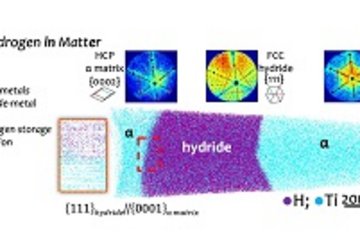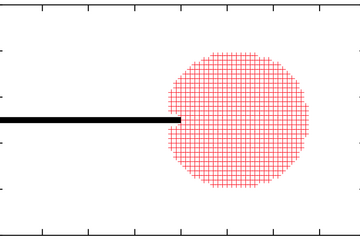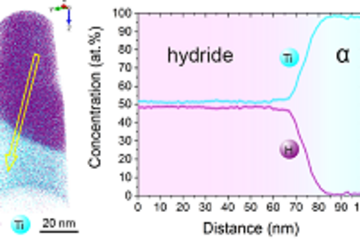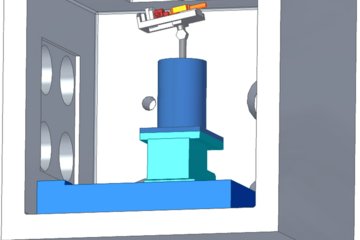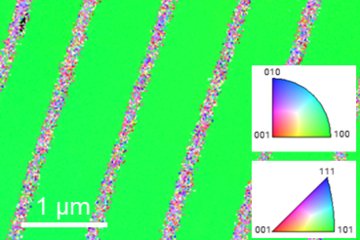All genres
41.
Journal Article
The exoskeleton of the lobster Homarus americanus as an example of a smart anisotropic biological material. Acta Biomaterialia 3 (3), pp. 301 - 309 (2007)
42.
Journal Article
Preferred crystallographic texture of α-chitin as a microscopic and macroscopic design principle of the exoskeleton of the lobster Homarus americanus. Acta Biomaterialia 3, pp. 882 - 895 (2007)
43.
Journal Article
Hardness and elastic properties of dehydrated cuticle from the lobster Homarus americanus obtained by nanoindentation. Journal of Material Research 21 (8), pp. 1987 - 1995 (2006)
44.
Journal Article
Microstructure and crystallographic texture of the chitin-protein network in the biological composite material of the exoskeleton of the lobster Homarus americanus. Materials Science and Engineering A 421, pp. 143 - 153 (2006)
45.
Journal Article
Experimental investigation of the elastic-plastic deformation of mineralized lobster cuticle by digital image correlation. Journal of Structural Biology 155, pp. 409 - 425 (2006)
46.
Book Chapter
Multi‐scale Modelling of a Biological Material: The Arthropod Exoskeleton. In: Materials Design Inspired by Nature: Function Through Inner Architecture (CHAPTER 9), pp. 197 - 218 (Eds. Fratzl, P.; Dunlop, J.W.C.; Weinkamer, R.) (2013)
47.
Book Chapter
Chitin in the exoskeletons of arthropoda: From ancient design to novel materials science. In: Chitin, pp. 35 - 60 (Ed. editor), N. S. G. (.). Springer, Germany (2011)
48.
Conference Paper
Structural design for broadband light management in a biological example. 2019 Conference on Lasers and Electro-Optics Europe and European Quantum Electronics Conference, CLEO/Europe-EQEC 2019, Munich, Germany, June 23, 2019 - June 27, 2019. 2019 Conference on Lasers and Electro-Optics Europe and European Quantum Electronics Conference, CLEO/Europe-EQEC 2019 8872263, (2019)
49.
Conference Paper
Structural design for broadband light management in a biological example. The European Conference on Lasers and Electro-Optics, CLEO_Europe_2019, Munich, Germany, June 23, 2019 - June 27, 2019. Optics InfoBase Conference Papers 2019-ck_p_43, (2019)
50.
Conference Paper
Integrated multiscale modeling approach for hierarchical biological nanocomposites applied to lobster cuticle. National Conference on Physics, Plovdiv, Bulgaria, October 10, 2014 - October 12, 2014. Bulgarian Chemical Communications 47 (B), pp. 424 - 433 (2015)
51.
Conference Paper
Quantum-mechanical study of single-crystalline and polycrystalline elastic properties of Mg-substituted calcite crystals. In: Key Engineering Materials, Vol. 592-593, pp. 335 - 341. 7th International Conference on Materials Structure and Micromechanics of Fracture (MSMF 7), Brno, Czech Republic, July 01, 2013 - July 03, 2013. (2014)
52.
Conference Paper
Spectral and angular distribution of light scattered from the elytra of two carabid beetle species. API'09 - First NanoCharM Workshop on Advanced Polarimetric Instrumentation, Palaiseau, France, December 07, 2009 - December 09, 2009. EPJ Web of Conferences 5, 02007, (2010)
53.
Conference Paper
Hierarchical modeling of the mechanical properties of lobster cuticle from nano‐ up to macroscale: The influence of the mineral content and the microstructure. In: Proceedings of MMM 2008 "Computational Modeling of biological and soft condensed matter systems", pp. 667 - 670. 4th International Conference on Multiscale Materials Modeling, Tallahassee, FL, USA, October 27, 2008 - October 31, 2008. Dep. of Scientific Computing, Florida State University, USA (2008)
54.
Talk
Exploring biomimetic oral care concepts using advanced electron microscopy. The Goettingen Spirit Summer School “Symposium on mineralization and biometric concepts in dental research", Göttingen, Germany (2018)
55.
Talk
Small-scale structure-property relations in biological hard tissues by nanoindentation. Indentation 2018, Liège, Belgium (2018)
56.
Talk
Quantitative Interaktion von HAP-Partikeln mit standardisierten Schmelzoberflächen in vitro und ultrastrukturelle Untersuchungen von Milchzähnen. Biorepair-Symposium, Bielefeld, Germany (2017)
57.
Talk
Broadband reflecting fibers with tailored structures inspired by desert ants. SPP 1839 – Retreat, Kostenz, Germany (2017)
58.
Talk
In-vitro-Untersuchungen zur Wechselwirkung von synthetischen Hydroxylapatit-Partikeln mit der Zahnschmelzoberfläche. Biorepair-Symposium, Bielefeld, Germany (2017)
59.
Talk
How living organisms manipulate light: Photonic structures in nature. Spring School of the SPP 1839 „Tailored Disorder“, Karlsruhe, Germany (2017)
60.
Talk
Mechanochromic photonic crystals based on cuticular scales of the weevil Entimus imperialis. IOP Conference ‘Optical Biomimetics’, Imperial College London, London, UK (2017)





